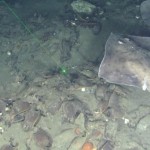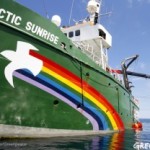John Hocevar visited MBARI yesterday discussing Greenpeace’s research on canyons in the Bering Sea. We’ve discussedthisresearchbefore but a followup is worthy of another post. Greenpeace has been trying to convince the powers that be to protect deep-sea diversity from fisheries practices. Unsurprisingly, some people don’t give a damn about the deep. It’s all I get mine and make some Benjamins. Some of the focus has been on Zhemchug and Pribilof Canyons. Zhemchug is the largest canyon in the world by volume (19x Monterey Canyon where my current interests and research are focused) and Pribilof which is in the top 10. Who doesn’t love a big crevasse? The native Alaskan communities do! They depend on fish that inhabit the canyons.
One of the obstacles to setting aside these two canyons has been a lack of information about the fauna residing there.
While the National Oceanic and Atmospheric Administration (NOAA) acknowledges that the canyons are diverse and rare habitats, the North Pacific Fishery Management Council announced in December, 2006 that not enough was known about these areas to justify their protection.
To reiterate f#$% the precautionary principle. Waa, waa, waa, we need more data. Can you say broken record? Luckily, Greenpeace funded and led research expeditions utilizing both submersibles and ROV’s to provide the necessary data. Indeed, it was interesting to hear that Greenpeace, since its beginning 37 years ago, often funds research to acquire data for conservation efforts.

Recent work at Zhemchug and Pribilof Canyons documented 14 distinct coral species and 20+ sponges. Often other species, like crabs and fish, were seen only in conjunction with these corals and sponges. Many of these records are the first documentation of these species in the Bering Sea. Evidence was abound of swaths of damaged corals and sponges from both trawling and bottom long lining.
Hopefully this new data will be instrumental in providing these two canyons more protections. Interestingly the presences of deep-water corals means that the area will receive more interest. Under the Magnuson-Stevens Fishery Conservation and Management Act corals must be located, mapped, and impacts to them reduced. Moreover, regular reports to Congress are required demonstrating process is being made on all these fronts.






“To reiterate, f#$% the precautionary principle, Waa, waa, waa, we need more data.” Yep, that about sums up right-wing response to pretty much every environmental problem there is.